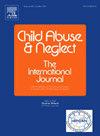Research on the impact and pathways of childhood trauma on the health status of middle-aged and elderly people
IF 3.4
2区 心理学
Q1 FAMILY STUDIES
引用次数: 0
Abstract
Background
Childhood trauma can shape one's life trajectories, with implications in later years. While some studies have investigated the effects of childhood trauma on the health of older adults, these researches remain limited on the pathways through which childhood trauma affects their health status.
Objective
To explore the impact and pathways of childhood trauma on the health status of middle-aged and elderly people, providing empirical evidence for enhancing health levels.
Methods
The data from the 2014 life course survey and 2018 cross-sectional survey of the China Health and Retirement Longitudinal Study were analyzed, focusing on individuals aged 45 and above. Using 15,812 observed samples and employing multiple mediation models, this study analyzed the impacts and pathways of childhood trauma on the health status of middle-aged and elderly people.
Results
Controlling for age, marital status, household registration, and activities of daily living (ADL), the total effect of childhood physical trauma on self-rated health was −0.059 (P < 0.001), with a direct effect of −0.057 (P < 0.001) and an indirect effect of 0.002. Physical trauma had indirect impacts through education level, behavioral lifestyle, and utilization of medical health services. The total effect of childhood emotional trauma on self-rated health was −0.048 (P < 0.001), with a direct effect of −0.050 (P < 0.001) and an indirect effect of 0.002. Emotional trauma had an indirect impact on educational level and social participation.
Conclusions
Childhood physical and emotional traumas have a sustained negative effect on self-rated health of middle-aged and elderly people, but the degree of influence and pathways are different. Therefore, it is necessary to provide effective support measures for children who have experienced childhood trauma throughout their entire lifecycle.
童年创伤对中老年人健康状况的影响及途径研究
童年创伤可以塑造一个人的生活轨迹,并对以后的岁月产生影响。虽然一些研究调查了童年创伤对老年人健康的影响,但这些研究对童年创伤影响老年人健康状况的途径仍然有限。目的探讨童年创伤对中老年人健康状况的影响及其途径,为提高中老年人健康水平提供经验依据。方法对中国健康与退休纵向研究2014年生命历程调查和2018年横断面调查数据进行分析,以45岁及以上人群为研究对象。本研究采用15812个观察样本,采用多种中介模型,分析童年创伤对中老年人健康状况的影响及其途径。结果在控制年龄、婚姻状况、户籍、日常生活活动(ADL)等因素后,儿童期身体创伤对自评健康的总影响为- 0.059 (P <;0.001),直接效应为- 0.057 (P <;0.001),间接效应为0.002。身体创伤通过受教育程度、行为生活方式和医疗卫生服务的利用有间接影响。童年情绪创伤对自评健康的总影响为- 0.048 (P <;0.001),直接效应为- 0.050 (P <;0.001),间接效应为0.002。情绪创伤对受教育程度和社会参与有间接影响。结论童年身心创伤对中老年人自评健康有持续的负面影响,但影响程度和途径不同。因此,有必要为经历过童年创伤的儿童提供贯穿其整个生命周期的有效支持措施。
本文章由计算机程序翻译,如有差异,请以英文原文为准。
求助全文
约1分钟内获得全文
求助全文
来源期刊

Child Abuse & Neglect
Multiple-
CiteScore
7.40
自引率
10.40%
发文量
397
期刊介绍:
Official Publication of the International Society for Prevention of Child Abuse and Neglect. Child Abuse & Neglect The International Journal, provides an international, multidisciplinary forum on all aspects of child abuse and neglect, with special emphasis on prevention and treatment; the scope extends further to all those aspects of life which either favor or hinder child development. While contributions will primarily be from the fields of psychology, psychiatry, social work, medicine, nursing, law enforcement, legislature, education, and anthropology, the Journal encourages the concerned lay individual and child-oriented advocate organizations to contribute.
 求助内容:
求助内容: 应助结果提醒方式:
应助结果提醒方式:


